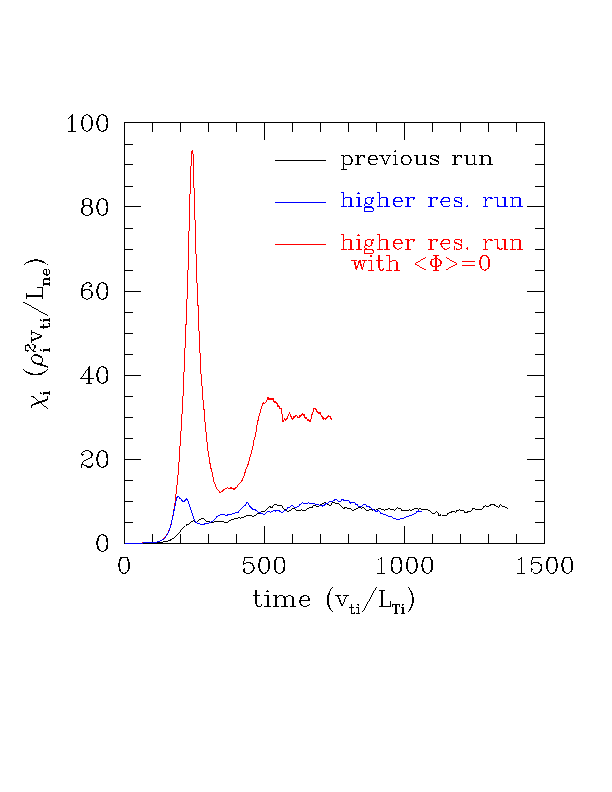
Here are some results using the DIIID shot 81499 parameters. I did a higher resolution run for the base case, and also did a run zeroing out the m=0,n=0 component of phi. This is done by setting the flux surfaced averaged potential to zero (<phi>=0) immediately after solving the quasineutrality constraint for phi, at each timestep. The purpose of this test run is to isolate potential differences between GF and GK treatments of the m=0,n=0 modes. The higher resolution run shows that my previous result seems converged. The run without m=0,n=0 modes (<phi>=0) gave about a factor of 4 larger flux. It also required a factor of 2.5 smaller timestep. This should help those doing GK simulations in choosing their numerical input parameters.

Some of the numerical parameters are below. Numerical parameters for the two high resolution runs:
k_x modes: (-31,...,-1,0,1,...,31) k_x rho_i: (-1.26...1.26)
k_y modes: (-15,...,-1,0,1,...,15) k_y rho_i: (-0.75...0.75)
(not counting modes added for de-aliasing)
phi(kx,ky)=phi*(kx,-ky) (complex conjugate)
32 grid pts in theta (along field line)
Our timestep adjusts during the run. The value quoted below is the smallest it got during the run, and dt was slightly above this value throughout the nonlinear stage.
base case:
chi_i = 8 rho_i^2 v_ti/L_n
dt >= .015 L_n/v_ti = .047 L_T/v_ti
with < phi >=0:
chi_i = 30 rho_i^2 v_ti/L_n (higher by a factor of almost 4 from base case)
dt >= .006 L_n/v_ti = .019 L_T/v_ti (lower by a factor of 2.5 from base case)
--Mike
Back to index of cyclone pages
Back to Mike Beer's home page